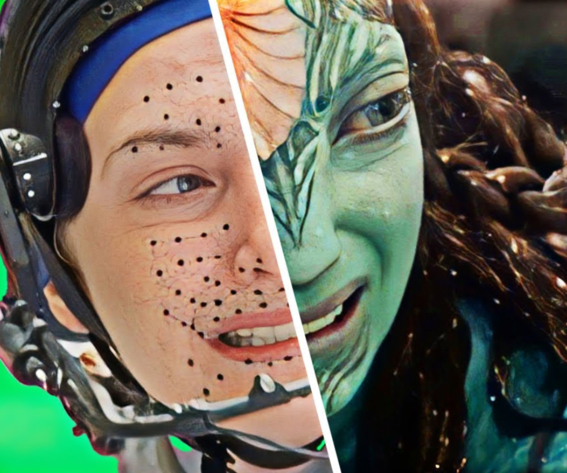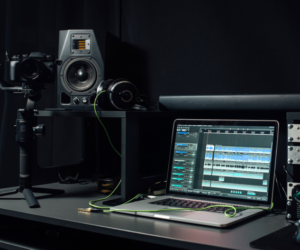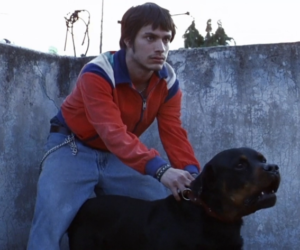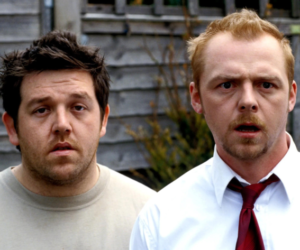Films have the power to transport us to far-off worlds, let us witness jaw-dropping spectacles, and even bring fantastical creatures to life. And at the heart of this movie-making magic lies CGI, or Computer-Generated Imagery. You’ve probably heard the term, but what exactly is CGI? Well, let’s break it down before we dive into the three good and three not-so-good ways filmmakers use it in the world of cinema.
What is CGI?
CGI, or Computer-Generated Imagery, is a technology that allows filmmakers to create, manipulate, or enhance visual elements in a movie using computer software. It’s the wizardry that turns a green screen into a dragon’s lair, or a motion-captured actor into a superhero soaring through the skies.
In essence, CGI serves as a versatile toolkit for directors, helping them bring their wildest imaginings to life. It can be a real game-changer in the film industry, but like any tool, it can be used wisely or abused. So, let’s take a closer look at three good and three bad uses of CGI in films.
The Good:
1. Crafting Spectacular Visual Effects
Imagine a massive, fiery dragon swooping down to attack our brave heroes in a fantasy epic. Sounds awesome, right? Well, without CGI, that dragon would be nothing but a paper-mâché puppet on set. CGI takes fantasy to new heights, creating breathtaking visual effects that are not only impossible but also prohibitively expensive to achieve through practical means.
For instance, dramatic battles in any superhero flick. With characters wielding superhuman powers and fighting off hordes of intergalactic villains, CGI became an integral part of the storytelling. What makes this a “good” use of CGI is how seamlessly it merges with live-action footage. When it’s done right, CGI allows us to suspend disbelief and fully immerse ourselves in the movie’s fantastical world. In the case of “Avengers: Endgame“, for instance, it made the impossible look real.
2. Resurrecting Beloved Characters
Sometimes, a movie can’t be told without revisiting the past or paying tribute to iconic characters. This is where CGI truly shines. It has the power to bring back beloved characters, even if the actors who portrayed them are no longer with us. A prime example of this is “Rogue One: A Star Wars Story” (2016), where a young Princess Leia and Grand Moff Tarkin made surprise appearances. The remarkable part is that both Carrie Fisher and Peter Cushing, who originally played these roles, had passed away.
The magic of CGI allowed the filmmakers to recreate the likenesses of these legendary actors, seamlessly integrating them into the film. When handled with respect and care for the original characters, this use of CGI can be a heartwarming and powerful tribute to the iconic figures that have left a permanent mark on cinema. And it’s not just resurrecting characters who can no longer be played by their original actors. It’s also related to de-aging actors, such as the famous example of The Irishman, or getting a young Indiana Jones back for 30 minutes in the recent Indiana Jones and the Dial of Destiny.
3. Building Entirely New Worlds
Would “Avatar” (2009) have been the visual spectacle it was without CGI? Highly unlikely. The lush, alien planet of Pandora, with its exotic flora, fauna, and the towering Na’vi, was a testament to the power of CGI in world-building. James Cameron used this technology to create a fully immersive environment that felt as real to the audience as the actors themselves.
In this case, CGI isn’t just an accessory; it’s the foundation of the film’s entire world. When filmmakers take their time to meticulously craft every detail and aspect, CGI can be an essential tool for creating a rich and immersive experience. “Avatar” showed that CGI can be an art form in itself, allowing filmmakers to transport us to places we could never even dream of visiting otherwise.
The Bad:
1. Overuse of CGI for Everything
While CGI can be a cinematic godsend, there’s a dark side to it when it’s overused. Some filmmakers fall into the trap of relying on CGI for everything, and it can result in a movie feeling overly artificial. When CGI is used to replace practical effects or to create elements that could have been achieved through real-world means, it often leads to a disconnect between the audience and the film.
For example, “The Hobbit” film trilogy (2012-2014) faced criticism for its heavy use of CGI, which often made the mystical world of Middle-earth feel less tangible compared to “The Lord of the Rings” trilogy. Sometimes, a bit of old-school craftsmanship can go a long way in maintaining the movie’s authenticity.
2. Unconvincing Character Animation
Another common pitfall of CGI in films is unconvincing character animation. When it comes to bringing creatures or characters to life, the balance between realism and artistry is crucial. If a character looks too cartoonish or behaves in a way that doesn’t align with the laws of physics, it can yank us out of the movie experience.
One example is the 2019 adaptation of “Cats.” While the film had a stellar cast, its use of CGI to turn them into anthropomorphic felines left audiences baffled and disturbed. The characters’ appearance was unsettling, with human faces imposed on furry bodies, creating a jarring visual dissonance. When character animation isn’t executed well, it can quickly turn a movie into a laughing stock rather than a cinematic masterpiece.
3. CGI Aging
This use of CGI can be more “bad” than “ugly.” In some films, especially those with sequels or long-running franchises, filmmakers have attempted to use CGI to de-age their actors to reprise their roles from previous films. As we’ve seen, in The Irishman and Indiana Jones and the Dial of Destiny, the results were extraordinary. And while the intent is often to preserve continuity, the results can sometimes leave us cringing.
Take “Gemini Man” (2019) as an example. In an attempt to make Will Smith look like his younger self, the film relied on CGI de-aging technology. The outcome, however, was not as convincing as one might hope, and it created an uncanny valley effect where the character seemed oddly artificial. While this technology is advancing, there are plenty of examples of it being done wrong, and it can distract from the story rather than enhancing it.
In conclusion, CGI is a potent tool in the world of filmmaking. When used with care and artistry, it can create awe-inspiring visuals, bring beloved characters back to life, and transport us to new worlds. However, it can also fall short when overused, leading to an artificial feel, unconvincing character animations, and sometimes questionable attempts to reverse the march of time.
















